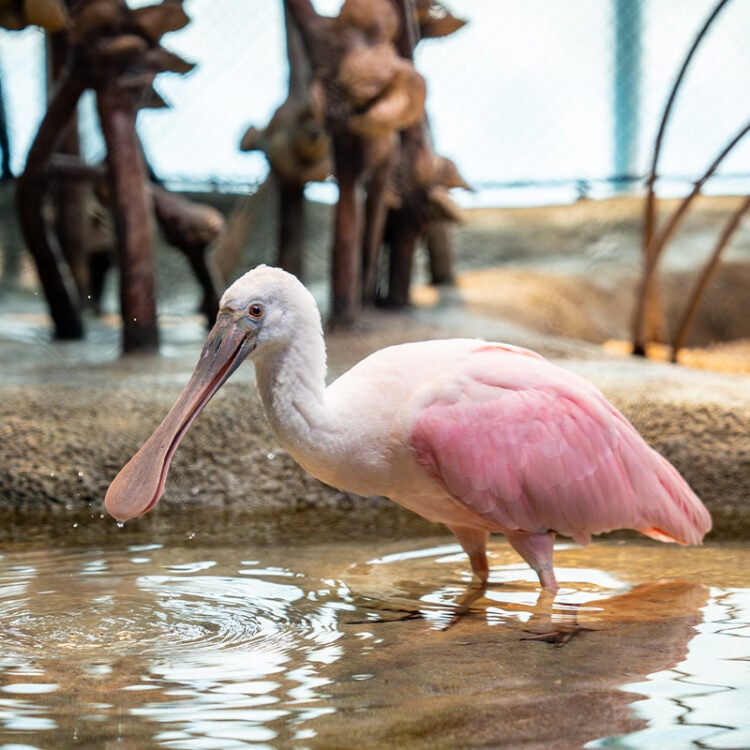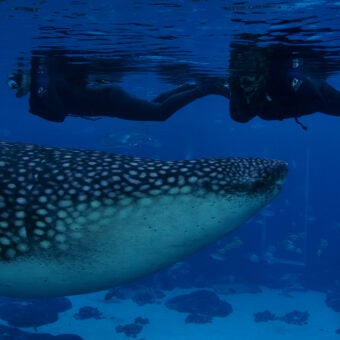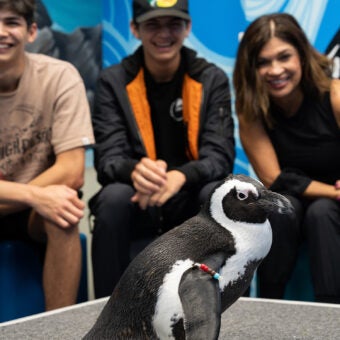-
Size
32 inches (81.3 cm) in length, weighs about 2.3 lbs. (1 kg) -
Diet
Small fish, aquatic invertebrates, plant material -
Range
Southeast U.S. through Central America, the Caribbean and South America -
Habitat
Shallow waters and marsh areas
Physical Characteristics
- Wings, tail and legs are a light pink to dark red color, neck and back are lighter in color to completely white.
- Bill is long and spoon-shaped (where the name comes from) and has a distinct yellow-green color.
- Can grow to be about 32 inches (81.3 cm) in length and typically weighs about 2.3 lbs (1 kg).
Animal Fun Fact
Roseate Spoonbills will use sticks from mangrove trees to build large, deep nests.
Diet / Feeding
- Diet consists of mostly small fish and aquatic invertebrates, occasionally plant material.
- Large spoon-shaped bill is used to sweep through the water to catch prey.
Range / Habitat
- Occurs in coastal areas of the Southeast U.S. through Central America, the Caribbean and South America.
- Found in shallow waters and marsh areas, especially mangrove forests and mud flats.
Reproduction & Growth
- Parents share responsibilities, alternating during incubation period which lasts 22-24 days.
- Typically lay 2-5 eggs per reproductive cycle (late April- early May).
- Fledging will take place between 6-8 weeks, with chicks starting to explore around the nest as early as 4 weeks.
- Very social species that will colonize with members of their same order for feeding and breeding.
Conservation Status
- “Least Concern” on IUCN Red List.
- Largest threat to this species is habitat destruction.
- Feathers of roseate spoonbills used to be used for hats and women’s fashion starting in the 1800’s but this became illegal in the 1940’s when major population declines were noted.
Additional Information
- Uses sticks from mangrove trees to build large, deep nests.
- This species attracts bird watchers to areas where it’s found, helping to stimulate the economy.
- Life expectancies can vary greatly for this species between native habitats (up to 10 years of age) and zoo or aquarium settings (typically 20-30 years of age).







